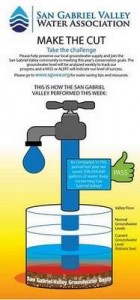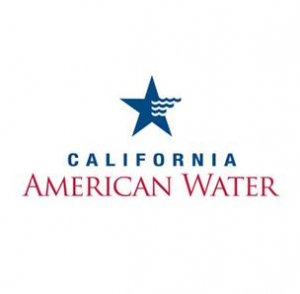Throughout a 10-week campaign this fall, San Gabriel Valley Water Company, Suburban Water Systems and Golden State Water Company, along with other water utilities and cities, were graded by the San Gabriel Valley Water Association (Association) on their use of groundwater provided to their customers during this time of drought. The Association conducted weekly tallies of the amount of water extracted from local groundwater basins and compared it with the amounts drawn the previous year as the foundation for assigning grades. Regions received a passing grade if the amount of groundwater drawn was less and an “alert” if the amount of groundwater was more.
 According to an article in the San Bernardino County Sun, the intent of the weekly reporting was to monitor how everyone within the Main San Gabriel and Raymond (Groundwater) Basins was doing as a whole, regardless of where water is acquired in the San Gabriel Valley. The article noted that, “During the first three weeks of the 10-week campaign, the San Gabriel Valley received two passing grades and one alert. On Oct. 10, the region used 730 million gallons less than the same week a year before and earned a passing grade. Week Two produced the mirror opposite: the Valley used 780 million gallons more than the same week in 2013.”
According to an article in the San Bernardino County Sun, the intent of the weekly reporting was to monitor how everyone within the Main San Gabriel and Raymond (Groundwater) Basins was doing as a whole, regardless of where water is acquired in the San Gabriel Valley. The article noted that, “During the first three weeks of the 10-week campaign, the San Gabriel Valley received two passing grades and one alert. On Oct. 10, the region used 730 million gallons less than the same week a year before and earned a passing grade. Week Two produced the mirror opposite: the Valley used 780 million gallons more than the same week in 2013.”
From a prepared statement referenced in the article, Association President Dan Arrighi, who is also Water Resources Manager for San Gabriel Valley Water Company, said, “Publishing the groundwater level on a weekly basis will help track our progress and help residents understand the importance of looking at drought solutions as a community effort.”
The issued alerts served as a signal for water companies and customers to take a harder look at water usage to determine where changes or improvements can be made. For example, water customers may think fall (October through December) is the end of hot weather and, consequently, will increase watering, but in this region, “temperatures can spike and humidity can drop” forcing the groundwater table to plummet.
The Association issued messages through multiple media outlets, including print ads, digital and social media, email blasts and website posts.





